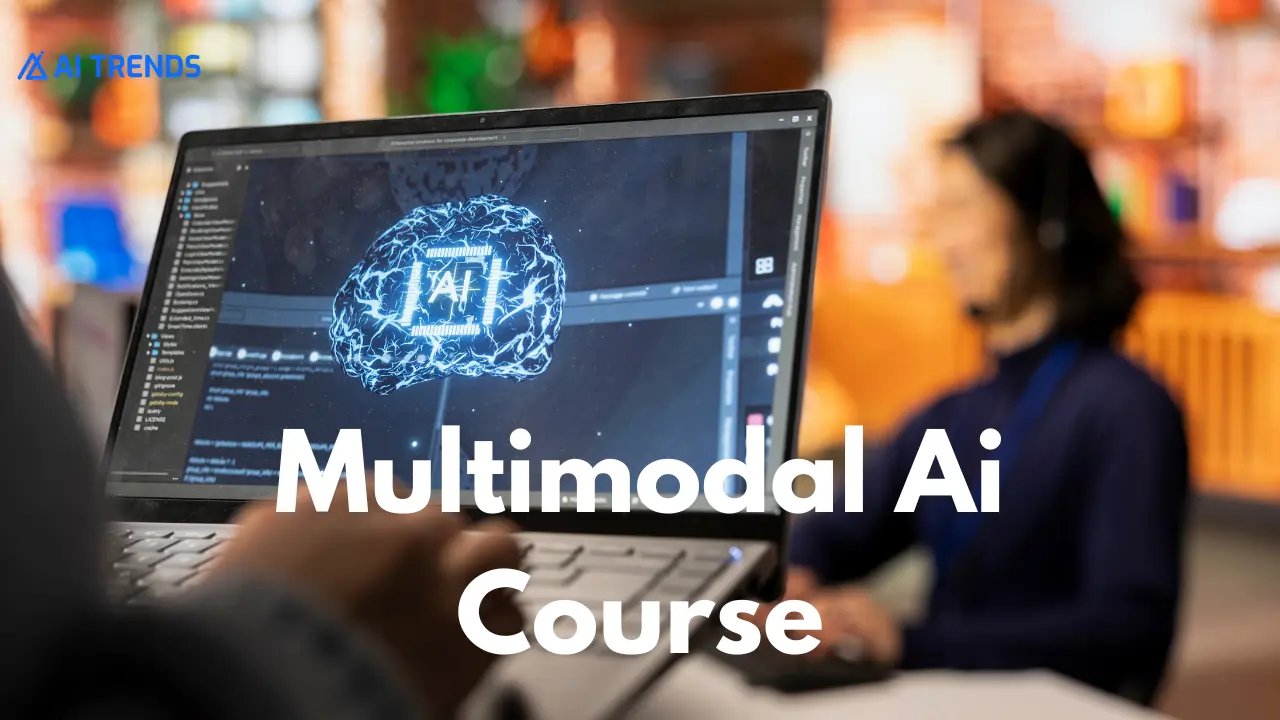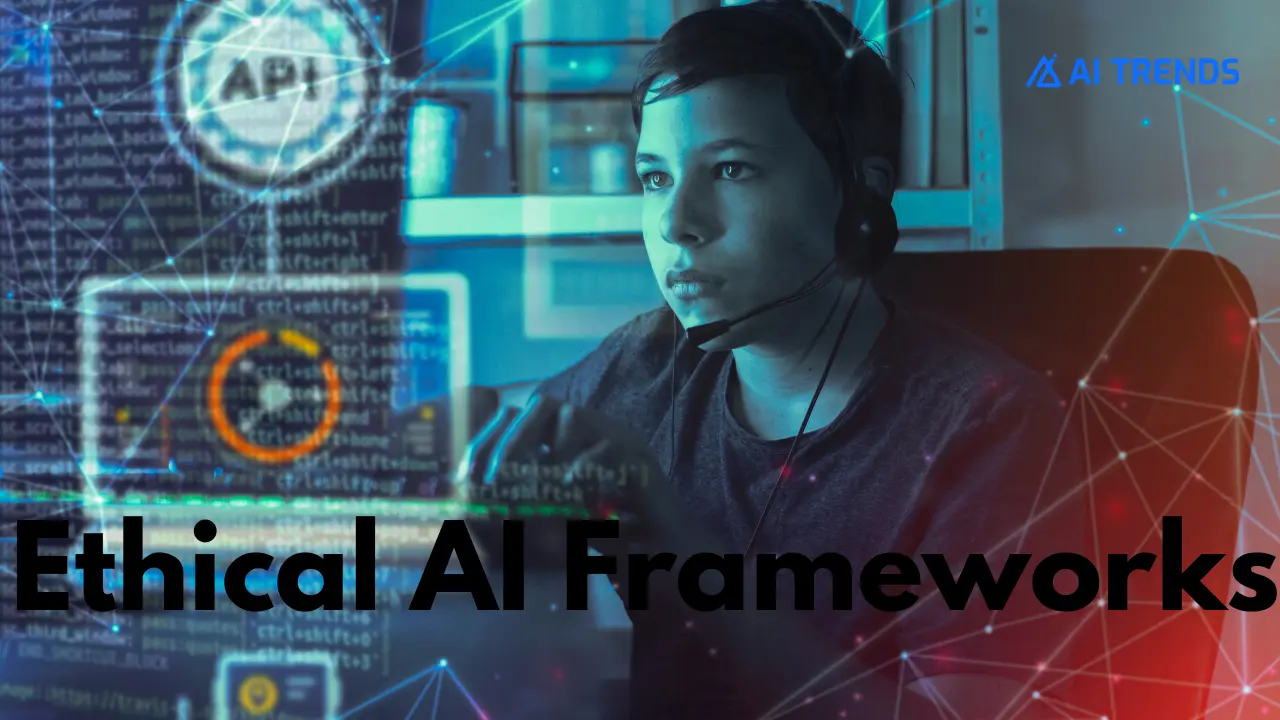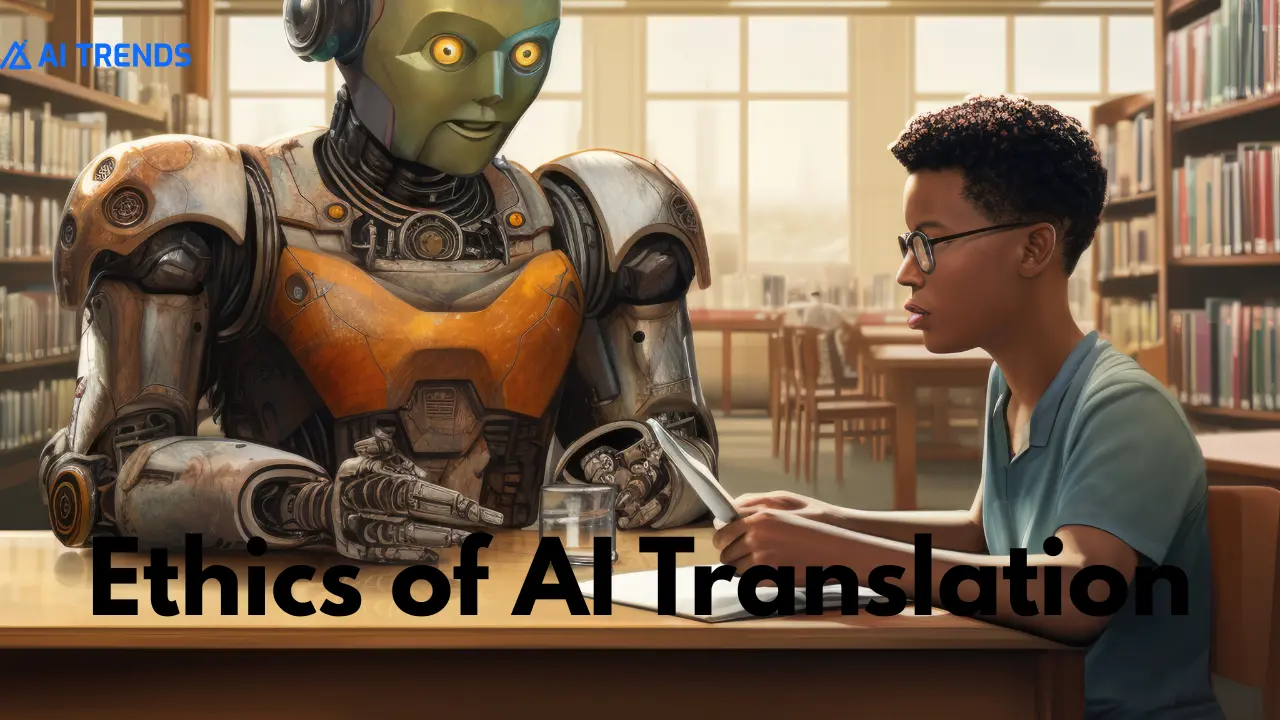Artificial intelligence isn’t just about text anymore. Think about it you talk to Siri or Alexa, and they not only process your words but also connect them to music, reminders, or even photos. OpenAI’s ChatGPT with images, Google’s Gemini, and Meta’s AI tools all use something called multimodal AI. In plain words, these systems can take in more than one type of input text, images, audio, or even video, and make sense of it together. If you’ve been looking up multimodal AI courses, chances are you want to understand how these systems are built, and maybe even build one yourself. The good news? You don’t need to be a research scientist with 10 years of coding experience to start. With the right multimodal machine learning course, you can go from curious beginner to building hands-on projects that combine text, images, and audio in smart ways. This guide will walk you through everything:
- What a multimodal AI course usually includes
- The difference between free and paid options
- Skills you’ll actually gain
- Best online courses and training programs worth trying
- Career paths you can unlock
Let’s break it down step by step.
Table of Contents
What Is Multimodal AI? (And Why You Should Care)
Before we jump into courses, let’s clear the basics. Multimodal AI is a type of artificial intelligence that uses more than one type of data at the same time.
- Single-modal AI: Works with one type of data. For example, a speech-to-text app only processes audio.
- Multimodal AI: Works with multiple types of data. For example, Google Photos lets you type “dog at the beach,” and it finds pictures that match, combining image understanding with text search.
Some real-world examples you’ve probably used without realizing:
- ChatGPT with images: Upload a photo and ask for analysis.
- YouTube captions: The system connects audio speech with text.
- Self-driving cars: Cameras, LiDAR, and maps work together.
Here’s the deal: single-modal AI is powerful, but multimodal AI is the future of applied AI learning. If you want to stay ahead, learning how to work with deep learning with multimodal data is a smart move.
Why Take a Multimodal AI Course?
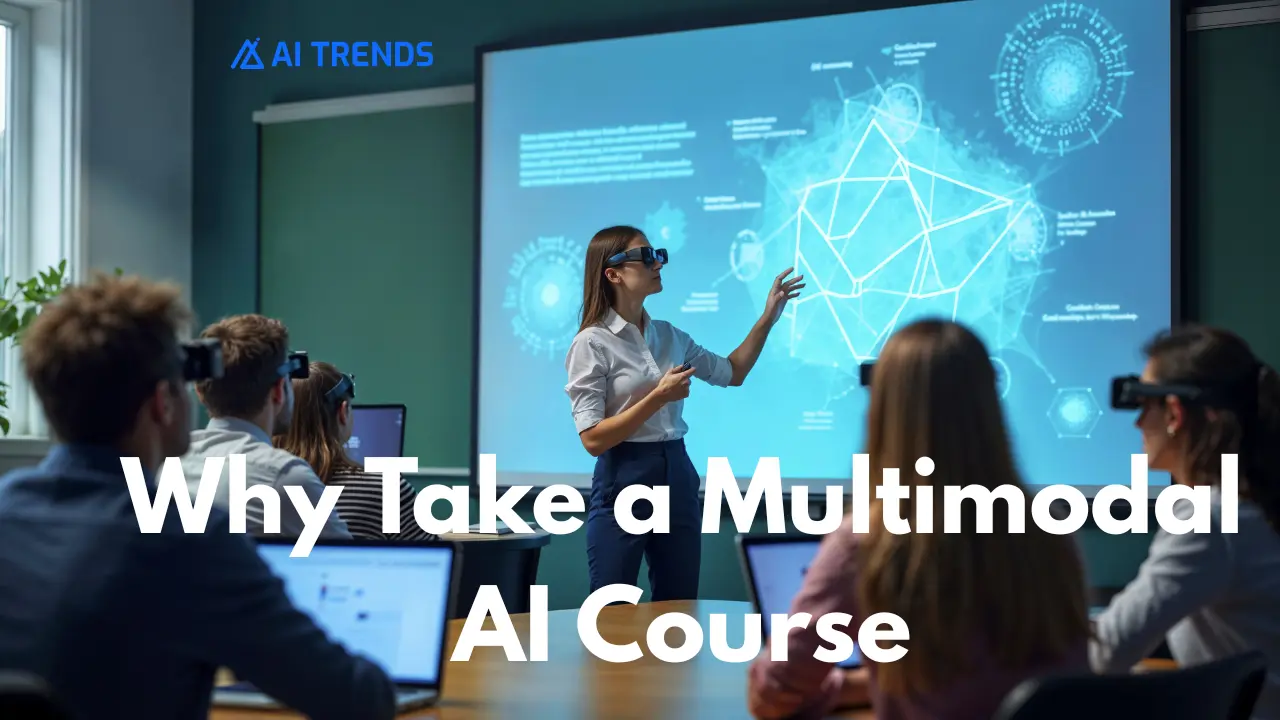
So, why not just stick to learning computer vision or natural language processing (NLP) separately? Well, because real applications today use fusion models in AI that mix these skills. By joining a multimodal AI training program, you’ll:
- Build cross-skills: Learn text + image + audio AI together.
- Work on real projects: From sentiment analysis with audio + text, to image captioning.
- Boost your career: Companies like Google, Meta, and OpenAI want people who can handle multimodal representation learning.
- Stay future-ready: More jobs now ask for AI for text, image, and audio than ever before.
My opinion? If you’re already learning AI, you might as well go multimodal. It saves time and gives you an edge in the job market.
What You’ll Learn in a Multimodal AI Course
Not every course covers the same topics, but here’s what a solid multimodal AI certification program usually includes:
- Foundations of AI and Deep Learning
- Basics of neural networks, transformers, and data handling.
- Computer Vision
- Image recognition, object detection, CNNs.
- Natural Language Processing
- Sentiment analysis, text classification, and embeddings.
- Audio Processing
- Speech recognition, sound classification.
- Fusion Models in AI
- Techniques to merge data types, like late fusion or joint embedding models.
- Multimodal Representation Learning
- How to align text, image, and audio into a single system.
- Hands-on Multimodal Projects
- Examples:
- Build an app that generates captions for photos.
- Train a chatbot that understands text and reacts to voice.
- Create a model that matches memes with text sentiment.
- Examples:
- AI Data Integration Techniques
- Cleaning, combining, and balancing data from multiple sources.
- Ethics and Bias in Multimodal Systems
- How combining different inputs can increase bias — and how to avoid it.
Free vs Paid Multimodal AI Courses
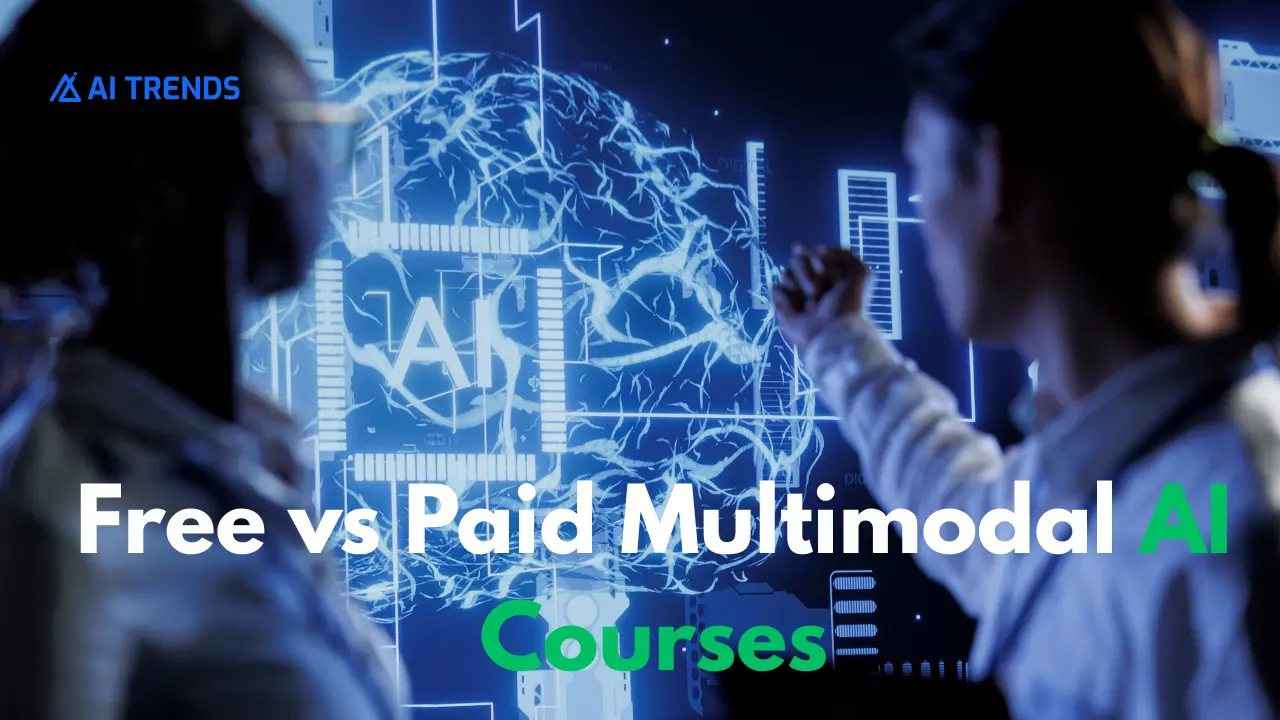
Let’s be real, not everyone wants to spend $1,000+ on a course. Luckily, there are both free and paid options.
Free Courses
- Usually shorter.
- Great for getting a feel of applied multimodal learning.
- Often lack deep project work.
- Platforms: Coursera free trials, YouTube, and free university lectures.
Paid Courses
- More structured and complete.
- Include hands-on multimodal projects.
- Often come with certification that helps with jobs.
- Platforms: Coursera (specializations), Udemy, DataCamp, DeepLearning.AI, edX.
My advice: Start with a free course. If you like it, upgrade to a paid multimodal AI certification for career use.
Best Multimodal AI Courses (2025 Update)
Here’s a list of some multimodal deep learning online courses worth checking out.
1. DeepLearning.AI: Multimodal Machine Learning Specialization
- Covers NLP + vision + audio.
- Hands-on labs with TensorFlow and PyTorch.
- Includes multimodal representation learning modules.
- Paid, but financial aid is available.
2. Stanford University: Multimodal Machine Learning Course (CS 330 / CS 336)
- Advanced but very high quality.
- Covers the theory of fusion models in AI.
- Free lecture notes online, official course runs on campus.
3. Udemy: Applied Multimodal Learning with PyTorch
- Beginner-friendly.
- Practical coding projects like image captioning.
- Low-cost, often discounted.
4. Hugging Face Tutorials
- Free guides on multimodal transformers.
- Covers AI for text, image, and audio.
- No certification, but great for hands-on learning.
5. Coursera: AI For Everyone: Multimodal Data
- Beginner-friendly.
- Focuses on AI skills development programs.
- Good if you want an introduction without heavy coding.
Skills You’ll Gain From These Courses
After completing a multimodal AI course, you’ll come out with skills that companies actually care about.
- Multimodal deep learning: Building models that take both text and image as input.
- Cross-modal learning: Teaching a system to connect one data type to another (like text-to-image).
- Project building: Deploying models as apps or APIs.
- Problem-solving: Knowing when to use multimodal vs single-modal.
- AI ethics: Understanding the bias risks in multimodal systems.
And yes, you’ll also become comfortable with coding frameworks like PyTorch, TensorFlow, and Hugging Face, which are often featured in any trending AI blog
Who Should Take a Multimodal AI Course?
Here’s a quick breakdown:
- Students: If you want to get into AI research.
- Software engineers: To add advanced AI to apps.
- Data scientists: To upgrade from single-modal ML.
- Product managers: To understand what’s possible with multimodal AI.
- AI hobbyists: If you just want to play with AI for fun.
Career Paths After a Multimodal AI Course
Taking a multimodal AI certification can open doors to roles like:
- Machine Learning Engineer (with multimodal focus)
- Computer Vision + NLP Specialist
- AI Research Assistant
- Data Scientist with Multimodal Expertise
- AI Product Developer
Salary-wise, roles with multimodal AI training tend to earn higher, since not everyone has these skills yet.
Pricing Breakdown: What to Expect
Here’s a general guide to multimodal AI training program costs:
- Free courses: $0 (YouTube, Hugging Face, Coursera trial)
- Budget-friendly courses: $20–$50 (Udemy sales)
- Professional certification: $200–$600 (Coursera, DataCamp, DeepLearning.AI)
- University-level programs: $1,500+ (Stanford, MIT, etc.)
If you’re aiming for jobs, I’d say the $200–$600 range is worth it for certification.
Common Questions About Multimodal AI Courses
Here’s a quick FAQ to clear doubts you might have.
1. Do I need coding skills?
Yes, basic Python is usually required. Most courses guide you through.
2. How long does it take?
Free intros: 2–4 weeks.
Full certification: 3–6 months.
3. Is it worth paying for a certificate?
If you want career benefits, yes. If it’s just for fun, free is fine.
4. Can I learn multimodal AI without a math background?
You’ll need some basics (linear algebra, probability). But beginner-friendly courses explain as you go.
5. Which is the best multimodal AI tutorial for beginners?
Udemy’s beginner projects or Hugging Face free guides are great starting points.
My Honest Take: Should You Enroll?
Here’s my straight opinion. If you’re serious about working in AI, a multimodal AI course is 100% worth it. The future of AI isn’t just text or images, it’s both, plus audio and more. Companies are actively looking for people who understand this. That said, don’t get stuck in course-hopping. Pick one, stick with it, and build hands-on multimodal projects. That’s what really shows skills.
Quick Comparison Table of Course Options
| Course / Platform | Skill Level | Price | Certification | Best For |
|---|---|---|---|---|
| DeepLearning.AI (Coursera) | Intermediate | $49/month | Yes | Career growth |
| Stanford University | Advanced | Free (notes) / $$$ (program) | No (online) | Research focus |
| Udemy Multimodal Learning | Beginner | $20–$50 | Yes | Hobbyists, students |
| Hugging Face Tutorials | Beginner–Pro | Free | No | Hands-on coding |
| Coursera AI for Everyone (Multimodal) | Beginner | Free / $49 | Yes | Non-coders, managers |
Final Thoughts
Multimodal AI isn’t just the future; it’s already here. From ChatGPT with images to self-driving cars to search engines that understand context, everything points toward systems that combine multiple data types. If you want to be part of that future, taking a multimodal AI course is the right step. Whether you go for a free intro or a full multimodal AI certification, the skills you gain will make you stand out. Start small, stick with one course, and most importantly, build projects. Because in the end, showing that you can actually make an AI that connects text, images, and audio matters way more than just finishing a course.





